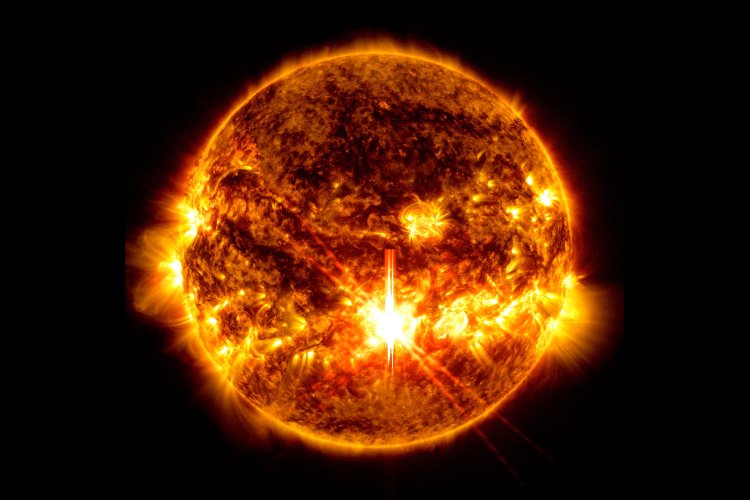NASA captures strongest solar flare of the cycle

NASA's Solar Dynamics Observatory (SDO) captured an exceptionally powerful X9-class solar flare, October 3, marking it as the strongest flare of the current solar cycle. This intense release of energy from the Sun was observed in two ultraviolet wavelengths.
Solar flares of this magnitude can have significant impacts on Earth, potentially disrupting radio communications, electric power grids, and navigation signals. They also pose risks to spacecraft and astronauts. The X9 classification indicates the flare's extreme intensity, surpassing the X6.3 flare recorded by NASA on February 22.
British solar astrophysicist Ryan French noted that this was the strongest solar eruption since 2017. The flare peaked at 5:48 pm IST, originating from an active sunspot region designated as AR3842. French highlighted the flare's unusually short duration of approximately 45 minutes, which is brief for an event of this magnitude.
Just two days prior, the same region produced an X7 class flare and a coronal mass ejection (CME). While solar flares are powerful energy bursts, CMEs are waves of charged particles that can cause auroras when interacting with Earth's atmosphere.
The impacts of this solar activity were already observed in Africa and Europe, where shortwave radio blackouts were reported. Meteorologist Sara Housseal suggested that effects from the CME could be witnessed from October 4 through early October 6.
This level of solar activity hasn't been recorded since September 2017, when X13.3 and X11.8 class flares were observed during the Sun's previous solar cycle. Such powerful solar events can potentially affect various Earth-based and space-based systems, including power grids, radio communications, satellites, and the International Space Station.
The occurrence of this intense solar flare highlights the Sun's ongoing active phase in its current 11-year cycle.















